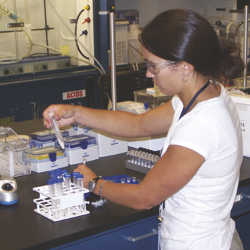Article contents
How researchers can help K–12 teachers bring materials science into the classroom
Published online by Cambridge University Press: 27 April 2011
Abstract

Education research strongly indicates that students make decisions in their mid- to late adolescence that impact the general direction of their careers, including choices about pursuing studies in science and mathematics. Educators can play an important role in these student career choices. By creating and implementing teacher professional development programs that increase teachers’ awareness/understanding of materials science and providing materials science-based classroom materials, researchers can take concrete actions toward improving the number and quality of students entering materials science and engineering departments as undergraduate students. No matter where you live or work throughout the world, there is a school nearby and abundant opportunities for researchers to make a difference in K–12 science education.
- Type
- Research Article
- Information
- MRS Bulletin , Volume 36 , Issue 4: Addressing broader impacts through K–12 outreach in materials education , April 2011 , pp. 284 - 289
- Copyright
- Copyright © Materials Research Society 2011
References
- 3
- Cited by




